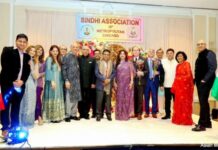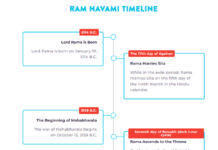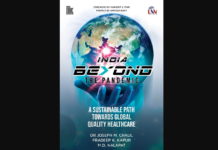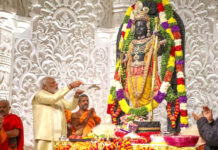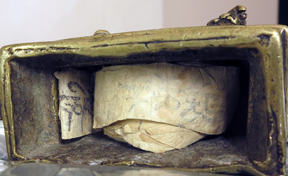
CHICAGO: The University of Chicago professor Matthew Kapstein’s lecture “Pandits and Poets: Kashmir’s contribution to Buddhist literature and philosophy in Tibet,” here at Block Museum Feb. 18 began with a glowing tribute to Shaiva tantric guru, philosopher and connoisseur, Abhinavagupta (c. 950-1020).
Abhinava’s intuitive aesthetic vision of the fundamental, blissful, unity of worldly experience and ultimate reality was mirrored in subsequent Indo-Tibetan Buddhism with resonances as far away as imperial China. Kapstein explored likely channels of transmission, before coming back a full circle.
Kashmiri Buddhism was not only transmitted indirectly via Ladakh, the focus of Block’s ongoing “Collecting Paradise” exhibition on Western Himalayan art. So central was the “Light of Asia” to Tibet’s civilizational identity that its lamas eagerly sought to assimilate the entire framework of classical Indian culture within which “Buddha-nature” had been elaborated and secured.
Ngok Loden Sherab in the 1070s braved difficult terrain to study at the feet of Kashmiri Buddhist luminary Sajjana, bringing back and translating precious Sanskrit manuscripts. Sherab’s two companions, who stayed back long enough, were initiated into the esoteric core of their master’s tantric teaching that strikingly reflects Abhinava’s own unitary Shaiva vision.
Kashmir remained such a creative trans-Himalayan beacon of culture, largely because it continued to draw sustenance from the rest of the subcontinent. Shakyashri Bhadra (1127-1225), “Great Kashmiri Pandit” of the Tibetans, having mastered the Valley’s lore by age 30, moved to Varanasi to study the most esoteric Kalacakra and Cakrasamvara (Buddhist counterpart of the Hindu Bhairava) tantras, before visiting eastern India and Sri Lanka to teach.
This head of Nalanda and Vikramashila universities, who had to find refuge in Orissa before the marauding Bakhtyar Khilji (1202 CE.), left for Tibet with nine disciples, constituting a “traveling university” that was a windfall for the lamas.
Sakya Pandita Kunga Gyeltsen (1182-1251), Shakyashri’s illustrious Tibetan disciple, insisted that his cloistered compatriots assimilate Sanskritic culture, resulting in a Tibetan Renaissance. As Pandita’s fame spread across the expanding Mongolian empire, he was ‘invited’ to visit their Khan Godan in China, which he did with his 10-year-old nephew and eventually chosen successor Phagpa, who became spiritual preceptor to emperor Kublai Khan before being appointed temporal ruler of Central Tibet.
While guru Shakyashri returned to spend the last 12 of his 99 years in the “vale of paradise” that was his native Kashmir, Pandita died after five years at the Mongol court. What the Tibetan pundits were transmitting to China and Central Asia was their appreciation of Indian Buddhism and Brahmanical learning as a whole.
The basic opposition shaping the intertwined evolution of Hindu and Buddhist philosophical traditions stems from the Upanishadic insistence on a transcendental Self (Atman) that the Buddha deconstructed as a false notion underpinning the painful cycle of rebirth.
But alongside the limited exoteric teaching of ‘self’ as empty, disseminated as Buddhist orthodoxy, Sajjana’s esoteric understanding (Shentong) also received attentive hearing across Tibet. Developed by Dolpopa Sherab Gyeltsen (1292-1361), Shentong flourished until his successors were persecuted by the Fifth Dalai Lama (1617-1682) for smuggling in the Vedantic Atman through the backdoor. Shentong insists on the immediacy, as opposed to mere potentiality, of our blissful Buddha-nature.
Celebrated in India for his satires, humor and renderings of epic tales, the cosmopolitan Vaishnava poet Kshemendra was induced, probably by Sajjana, to compose Avadana Kalpalata versifying the Buddha’s myriad rebirths. Though the integrality of its Sanskrit original was lost in India, the entire cycle was translated and preserved in Tibetan.
The Fifth Dalai Lama published a bilingual edition and encouraged artistic works based on its themes. In Eastern Tibet, the authoritative painter-chaplain Situ Panchen (1700-1774), who had them illustrated Chinese style, also popularized Shentong, thereby foreshadowing the eclectic universalist 19th C. movement on the Sino-Tibetan frontier.
Kshemendra was a disciple of Abhinava, who taught that the “recognition of (the Self’s) fullness” (purnata-pratyabhijna) authorized the consummate Shaiva guru to teach Vaishnava and Buddhist doctrines, with genuine sympathy, to respective adherents of these otherwise distinct currents of faith. The present Dalai Lama has a more liberal attitude to this “quasi-Kashmir Shaiva” tradition.
Tsong Khapa, founder of the Dalai Lama’s Gelugpa order, was deemed a reincarnation of and named after Kashmiri Pandit Sumati Kirti, who played a key role in the transmission of Cakrasamvara tantric literature and practices.
What the now Islamized Valley meant as spiritual home and seat of learning to Buddhists across Asia is on display in “Collecting Paradise” through its tutelary Shaiva goddess, Kashmira: the long overlooked consecration text preserved within her ’empty’ core is not in her native Sharada script but in Tibetan!-Pic courtesy exhibition curator Robert Linrothe
Elizabeth Visuvalingam



